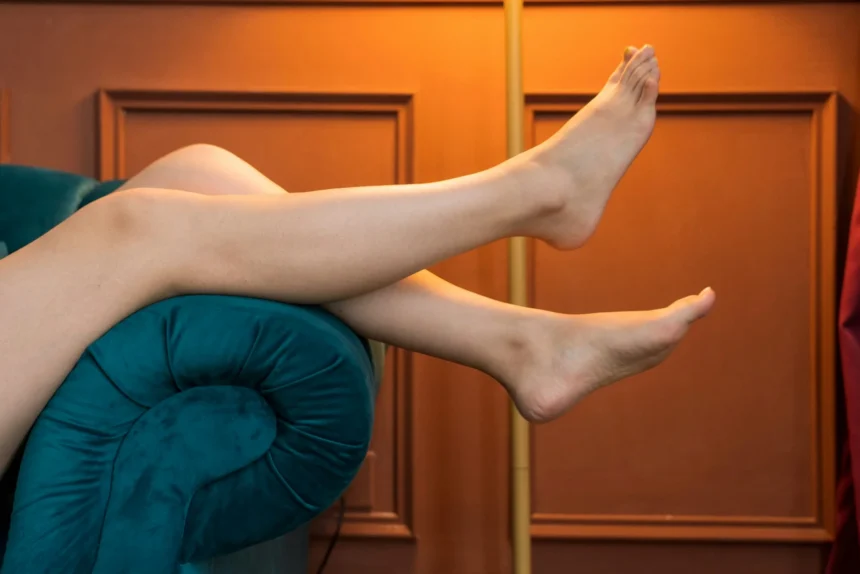Varicose veins are enlarged, twisted veins that become visible under the skin, often appearing blue or dark purple. They frequently occur in the legs and can affect both men and women. While sometimes seen as a cosmetic issue, these veins can also cause symptoms that require management. Here’s more information on management methods for varicose veins and chronic pain:
Connecting Varicose Veins and Chronic Pain
Varicose veins develop when the walls and valves within the veins weaken. Healthy veins contain one-way valves that help push blood against gravity toward the heart. If these valves become damaged, blood can flow backward and accumulate in the vein, causing it to stretch and enlarge. Several factors can increase the likelihood of developing varicose veins, including age, hormonal changes, family history, lifestyle habits, and excess body weight.
Vein weakening can lead to a condition known as chronic venous insufficiency (CVI). CVI occurs when the leg veins are no longer able to effectively move blood back to the heart, and this inefficiency leads to blood pooling in the lower extremities. The persistent pressure and swelling from CVI may contribute to ongoing symptoms, making varicose veins a chronic condition that impacts daily comfort for some people.
Varicose veins can also be closely connected to chronic pain conditions due to the ongoing strain and inflammation they place on the affected areas. When blood pools in the veins as a result of CVI, it creates increased pressure in the lower limbs, which may lead to sensations like:
- Aching
- Throbbing
- Burning Pain
The body’s inability to efficiently circulate blood over time can result in tissue damage, nerve compression, and even the development of ulcers in severe cases. This chronic discomfort can greatly affect mobility, sleep quality, and overall well-being.
Managing Varicose Symptoms
Individuals with varicose veins may experience a range of symptoms, which can vary in intensity. The presence and severity of these symptoms determine what management strategies may be beneficial. Some common symptoms of these veins may include:
- Bulging, Rope-like Veins
- Heaviness or Aching in the Legs
- Itching or Irritation Near Affected Veins
- Throbbing or Muscle Cramping
- Swelling in the Feet and Ankles
- Discoloration of the Skin
For many individuals, conservative, at-home strategies help manage symptoms and prevent them from worsening. Individuals may find relief by wearing compression garments, which apply gentle pressure to the legs to support blood flow. Other helpful practices include elevating the legs when resting, taking regular walks to promote circulation, and maintaining a healthy weight. It is also beneficial to avoid prolonged periods of standing or sitting and to incorporate gentle exercises into a daily routine.
Treating Varicose Veins
Managing vein issues often involves a combination of at-home care and, in some cases, clinical procedures. The approach depends on the individual’s symptoms, the severity of the veins, and the healthcare provider’s assessment. When more conservative methods don’t provide significant relief, surgical treatment methods may be recommended.
Sclerotherapy
Sclerotherapy is a procedure used to address varicose and spider veins. It involves injecting a specialized solution directly into the targeted vein, and this solution causes the vein walls to stick together and eventually close off. Blood flow is then rerouted through healthier veins nearby. Sclerotherapy is often used for small to medium-sized varicose concerns and may require multiple sessions for optimal results.
Laser Therapy
Laser therapy offers a noninvasive option for treating smaller varicose and spider veins. This method uses focused beams of light to heat and damage the wall of the targeted vein, causing it to collapse and fade over time. No needles or incisions are used in surface laser treatments. This approach is typically suited for superficial veins located close to the skin’s surface.
Schedule a Cardiovascular Consultation
If you’re experiencing symptoms like pain, swelling, or other vein-related discomfort, contact a cardiovascular specialist for a consultation. Understanding the symptoms and management options for varicose veins is the first step toward addressing the condition. A qualified clinician can provide a thorough assessment of your specific situation. They gather information and assess what management strategies may best suit your health needs.











